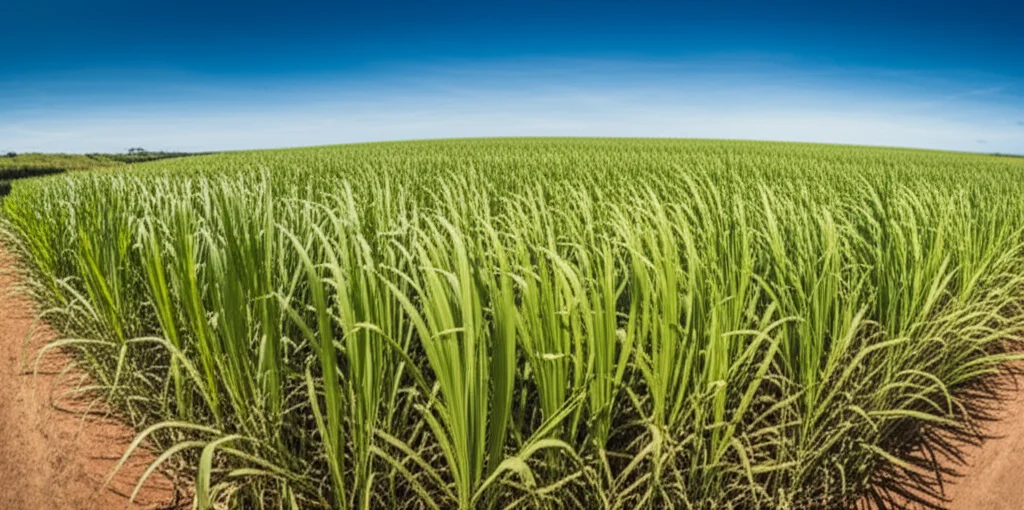Ecuador’s Sugarcane Under Threat: Climate Change Fuels a Pesky Bug
Hey there! Let’s chat about something really important happening down in Ecuador, specifically at a place called Ingenio San Carlos. If you’re into agriculture, climate change, or just curious about how the world around us is shifting, you’ll want to hear this story. It’s about sugarcane, a little bug, and how our changing climate is stirring things up in a big way.
For ages, sugarcane has been a massive deal in Ecuador. It’s the backbone of their sugar industry and covers a huge chunk of land. We’re talking over 116,000 hectares planted back in 2022! But here’s the kicker: by 2023, that number dropped significantly. A whopping 33.5% decrease in planted area! Why? Well, lots of factors play a role, but one major headache is pests.
Meet the Culprit: Perkinsiella saccharicida
Our main character in this drama is a tiny sucking insect called *Perkinsiella saccharicida*. Don’t let its size fool you; this little hopper is a major pest for sugarcane crops across Ecuador. It causes noticeable yield losses – we’re talking anywhere from 12 to over 36 tons per hectare! That’s a lot of lost sugar!
But honestly, the direct munching isn’t the scariest part. The *real* nightmare is that *Perkinsiella* is a known vector for the Fiji disease virus. This disease is *not* currently in the Americas, and everyone wants to keep it that way because it’s incredibly hard to control and can wipe out crops. So, keeping *Perkinsiella* populations in check is super important, like a first line of defense.
Early studies, going way back to Mauritius in the early 1900s, already hinted that temperature and humidity mess with this bug’s life cycle. At warmer temps (like 22-25°C), their life cycle is shorter. Colder temps mean the egg stage alone can drag on for over a month. This tells us climate is a key player in their lives.
The Changing Climate Picture
Now, we all know climate change is a thing. Scientists worldwide are seeing rising temperatures, weird rain patterns (sometimes too much, sometimes not enough), and this messes with everything, including how insects spread and thrive. Temperature is arguably the *most* influential factor for insect development. It affects how fast they grow, how many babies they have, how long they live, and where they can live.
Experts predict that by 2030, climate change could slash crop yields dramatically – up to 70% in some cases! And pests are a huge part of that loss, accounting for maybe 10% to 28% of global crop production gone. So, understanding how pests like *Perkinsiella* react to these climate shifts is absolutely critical for keeping food on our tables.
Our Deep Dive in San Carlos
This is where our study comes in. We wanted to see exactly what was happening with *Perkinsiella* populations at Ingenio San Carlos and if the climate variations there were playing a role. Ecuador’s coastal region has a tropical climate, heavily influenced by big ocean-atmosphere patterns like El Niño and La Niña. It has two main seasons: a rainy “winter” (December to May) and a dry “summer” (June to November).
We looked at a massive dataset – climate info and *Perkinsiella* counts from 2006 all the way up to September 2023. We used records kept by the folks right there at Ingenio San Carlos. We crunched the numbers using a bunch of statistical tools to see if there were patterns, relationships, or even cause-and-effect links between the weather and the bugs.
What the Climate Data Told Us
First off, we confirmed what many suspect: the climate *is* changing in this area. We looked at “anomalies,” which basically means how much the weather in a given month differed from the long-term average (the “climatological normal” from 1991-2020).
The data showed clear trends. Since 2010, temperatures, accumulated precipitation, and solar radiation have generally been on the rise. You can see it in the graphs – the anomaly lines are often floating above the zero line. On the flip side, things like evaporation, thermal oscillation (the difference between max and min temp), and sunshine hours showed a downward trend.
We saw big spikes in positive anomalies (meaning much warmer/wetter/sunnier than average) during periods like 2014-2016, 2018-2019, and 2023. These align with known El Niño events, which bring warmer ocean temperatures and more rain to the coast. Conversely, we saw negative anomalies (colder/drier than average) during La Niña years like 2007-2008, 2010-2012, 2016-2018, and 2020-2023.

The Bug’s Changing Behavior
Now, for our little *Perkinsiella* friends. Looking at the data from 2006 to 2023, we saw some fascinating shifts. Initially, the bug wasn’t always present. Some months had zero counts. When they did show up, it was often with distinct seasonal peaks.
Between 2006 and 2010, the pattern was pretty clear: *Perkinsiella* abundance was highest only during the rainy season. It was a seasonal pest, peaking when things were warm and wet.
But then, something changed. From 2011 onwards, that pattern got blurry. The bug started showing up in higher numbers not just in the rainy season, but also in the dry season. Its abundance became higher on average from March all the way through October, covering both seasons. It’s like they decided the dry season wasn’t so bad anymore! We also saw higher maximum counts and more variability during the dry season in recent years.
The highest population spikes we recorded were pretty intense – average insect counts per sugarcane shoot reaching over 58 in July 2011 and over 56 in July 2020.
Connecting the Climate and the Bug
So, how does the climate connect to this shift in *Perkinsiella*’s behavior? We dug into the relationship between the climate variables and the insect’s abundance.
Interestingly, we found that high temperatures (maximum and median) and high solar radiation values tended to *precede* spikes in *Perkinsiella* populations by about six months. It’s like the warmer, sunnier conditions set the stage for a population boom half a year later. Other variables, like evaporation, thermal oscillation, and sunshine hours, showed a different pattern – high insect abundance seemed to happen *before* increases in these variables, with a one-month lag. Minimum temperature and accumulated precipitation had associations at longer lags (over 12 months).
We also looked for causality. Using fancy statistical models, we found that some atmospheric variables *do* have a causal relationship with *Perkinsiella* abundance. Our model suggested that increases in maximum temperature and sunshine hours were associated with an *increase* in the bug population in the following month. Conversely, increases in evaporation and solar radiation were linked to a *decrease* in the bug population the next month.
Perhaps the most telling finding about the seasonal shift came from comparing the dry season temperatures of recent years (2011-2022) to the rainy season temperatures from a decade ago (2006-2010). Guess what? The median temperatures during the *current* dry seasons are statistically similar to the median temperatures that occurred during the *rainy* seasons ten years ago! This is huge. It means the dry season is now offering temperature conditions that used to be exclusive to the rainy season, making it favorable for the bug to thrive year-round.

Why This All Matters
The results are pretty clear: we’re seeing a steady increase in temperature over time in this region, and it’s directly linked to more frequent and persistent *Perkinsiella* outbreaks. The bug isn’t just a rainy-season problem anymore; it’s showing a strong tendency to stick around throughout the entire year.
Think about 2023, for example. Temperatures were significantly higher than in recent years, partly due to El Niño and partly due to broader climate change factors. We even saw temperatures exceeding the pre-industrial average by 1.5°C on some days! These warmer conditions are creating a more hospitable environment for *Perkinsiella*.
This shift means sugarcane growers at Ingenio San Carlos (and likely elsewhere in the region) have to ramp up their efforts to control this pest. More biological control, more chemical control – whatever it takes to manage populations that are now active for longer periods. This adds costs and complexity to farming.
The threat of the Fiji disease virus looms large. With *Perkinsiella* populations persisting year-round, the risk of this devastating disease entering and spreading increases.
Looking Ahead
Our study also included a forecast, predicting that *Perkinsiella* abundance will likely continue its upward trend during the traditional “winter” (rainy) months. This reinforces the idea that the pest pressure isn’t going away anytime soon.
Ultimately, this research highlights a critical point: climate change isn’t just about melting ice caps or stronger storms. It’s also subtly, but powerfully, altering the delicate balance of ecosystems, including agricultural ones. Pests are adapting, and their changing behavior has real economic consequences and poses serious threats to food security, especially in vulnerable crops like sugarcane.
Understanding these relationships – how temperature, rain, and sunshine influence the life of a tiny bug – is key to developing effective strategies to manage pests in a warming world. It’s a complex puzzle, but one we absolutely need to solve to protect our crops and our livelihoods.
Source: Springer







